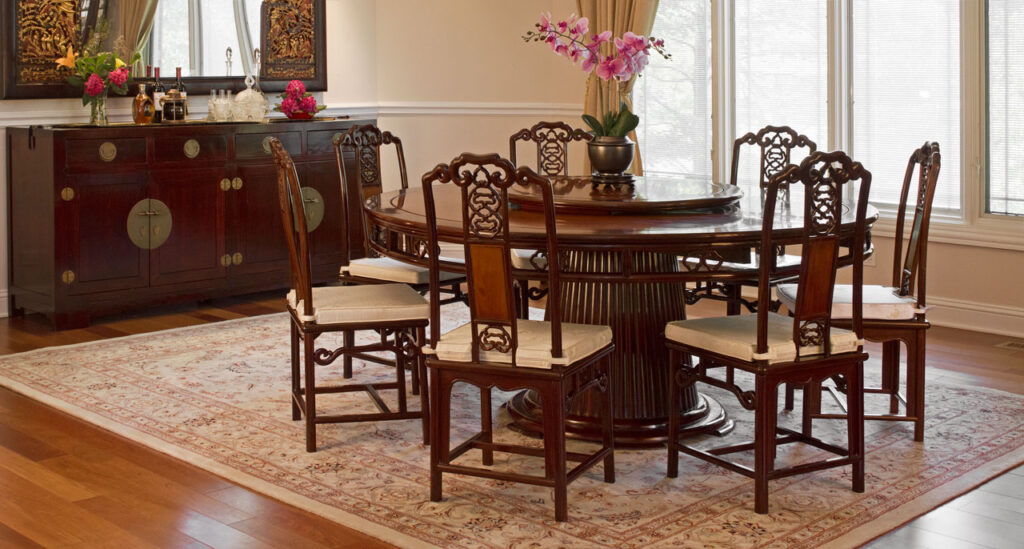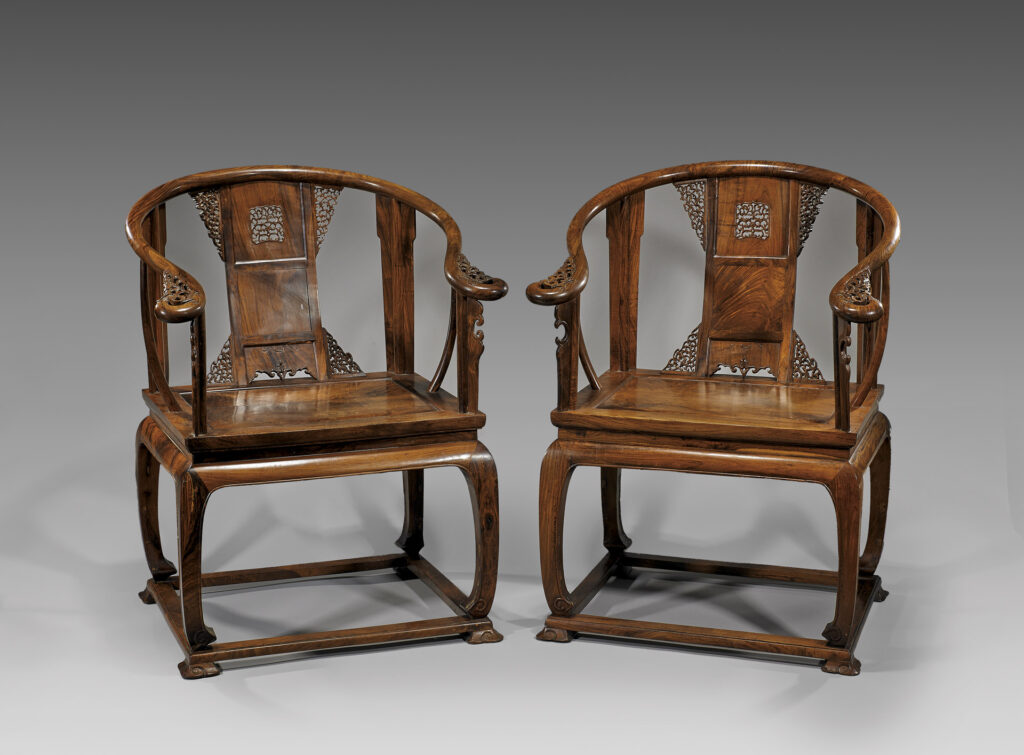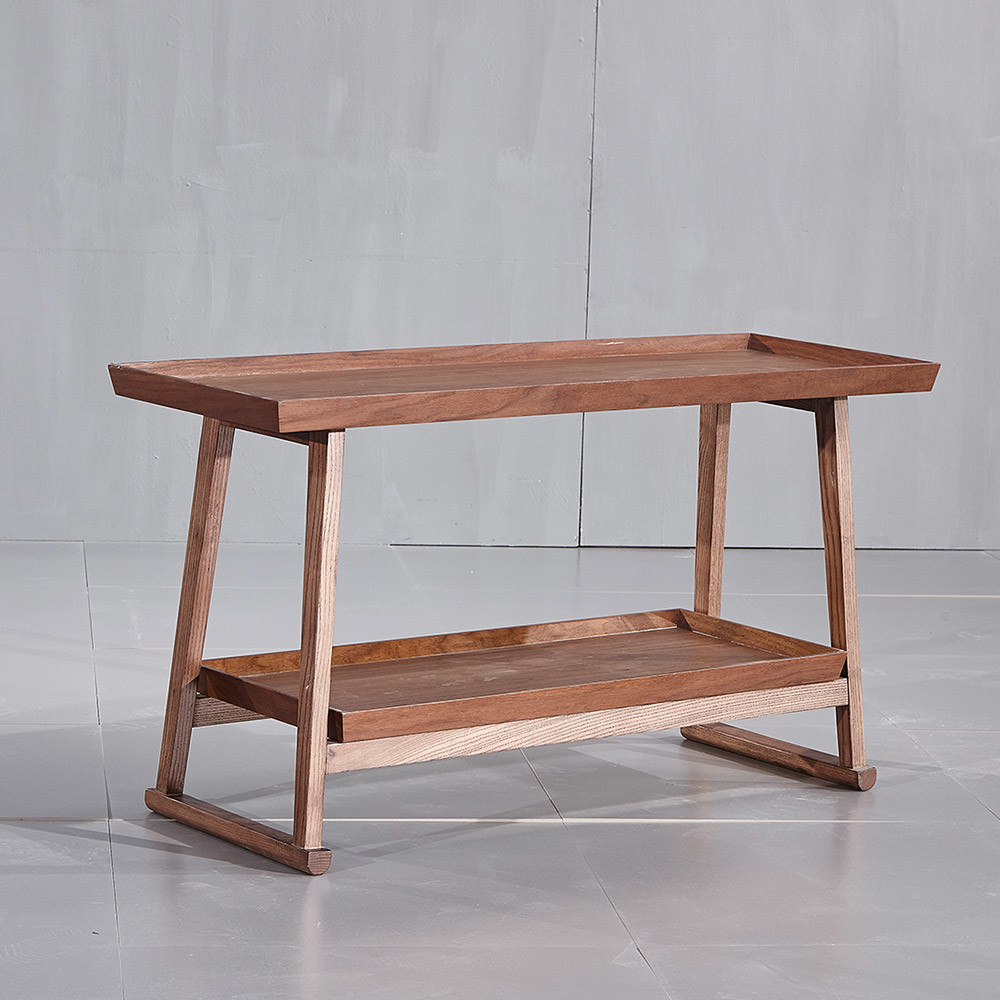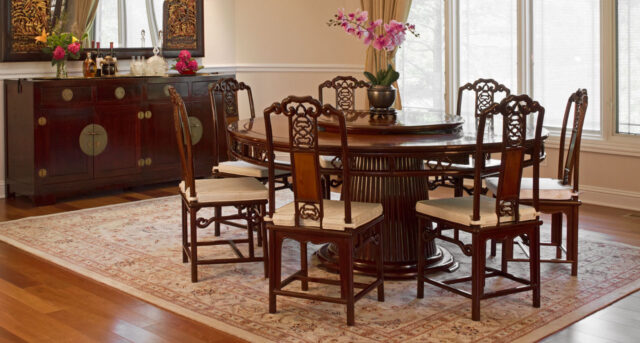Being one of the oldest civilisations in history the Chinese culture has had a significant impact on the world of art, design, and furniture. What some people do not fully appreciate is that the influence goes both ways as well. Like any grouping the Chinese dynasties have evolved not just internally but by inspecting and absorbing elements outside as well.
When it comes to consideration of Chinese works of art most of us immediately think of the Ming dynasty. It seems that popular culture in both film and book is fascinated by the concept of the Ming vase, and it is this association of art and dynasty that appears to be the most common.

Chinese dynastic history has been much more diverse than this and we will explore one of the other dynasties which has impacted the world of furniture.
The Ming and Qing dynasties were actually next to each other in time. There is a very clear and comprehensive reference work on Wikipedia chronicling the change from the Ming dynasty to the later Qing dynasty. There was a fairly long period of change shifting from one to the other that lasted from approximately 1618 to 1683. In comparison to the long history of the country this is actually a relatively recent transition. Although at the time the Ming was the largest dynasty the Qing actually superseded a number of other smaller dynasties such as the Shun and Xi.

To find out just how the Qing altered the thinking around furniture design we caught up with Rod Tuttle of KalustoFurniture.co.uk whose firm deals in examples of Qing oriental furniture. He told us: “What most people don’t realise is that the change from Ming to Qing was actually quite slow and gradual. At the start of the Qing period, we still refer to furniture as Ming dynasty furniture which still had the simpler lines not the more florid touches, we get with later Qing furniture. Also, there was western influence in the middle and end periods during the times of the Opium Wars. You can easily identify Qing by the degree of detailed carving.”
It turns out that the Qing style metamorphosed over a period of time. If you look at the main part of that era, however, there are certain characteristics that stand out. The artisans were meticulous in their selection of materials. They heavily favoured rich, deep coloured hard woods. Thus, you will find good use made of ebony, beech, rosewood and sandalwood. Qing furniture makes extensive use of curved, decorative carvings. The decoration and inlays can be highly elaborate. Embedded patterns using other woods, bamboo, stone, mother of pearl, China and jade are also common.

As mentioned earlier there was a degree of western influence creeping into this style and some examples can be seen that are almost direct copies of western furniture of the time while others are copies but with unique, distinctive touches of overlays and inlays.
Some pieces are carved head to foot with intricate design work while others may be quite plain with auspiciously placed plates of décor as deemed appropriate by the craftsman.







